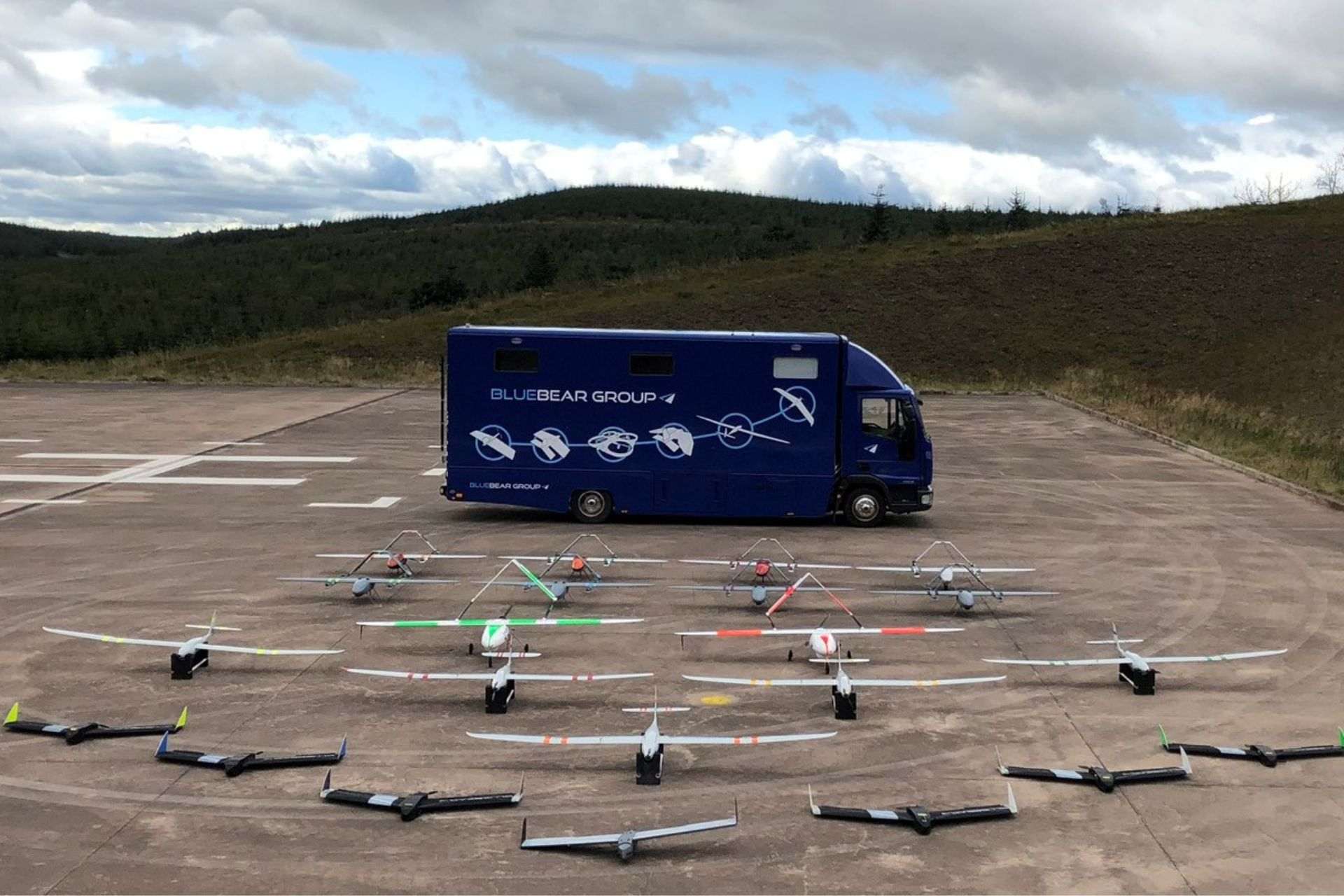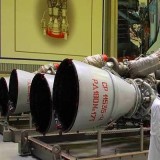Sweden Looks to Ukraine for Inspiration as It Tests New Drone Swarm Technology with Saab

{loadposition bannertop}
{loadposition sidebarpub}
According to Reuters, Sweden’s Minister of Defence, Pål Jonson, announced on January 13, 2025, that the country will test a new drone swarm technology developed by the Swedish Armed Forces in collaboration with defense company Saab during the Arctic Strike exercise. This project is being undertaken in the context of rapid advancements in drone technology and tactics, largely influenced by lessons learned from the war in Ukraine.
Follow Army Recognition on Google News at this link
Using advanced software, the planned swarms will be capable of performing various tasks without direct human intervention (Picture source: Saab)
Drones have long played a critical role in intelligence and reconnaissance missions for modern militaries. However, the conflict in Ukraine has significantly accelerated its evolution, introducing new applications ranging from real-time surveillance to precision strikes. Both Ukrainian and Russian forces have heavily employed these technologies, demonstrating their disruptive potential on the battlefield. Notably, Ukraine has adapted commercial drones, such as first-person view racing drones, which have proven effective in intercepting enemy drones, attacking armored vehicles, and disrupting logistical operations.
Drawing on these lessons, Sweden has initiated an ambitious project to expand the capabilities of drone technology. Using advanced software, the planned swarms will be capable of performing various tasks without direct human intervention. Pål Jonson highlighted that this technology will be tested during Arctic Strike 25, scheduled for March. The exercise, which will also involve industry partners, is set to evaluate the drones’ performance in realistic conditions. This project reflects Sweden’s commitment to enhancing its military capabilities while integrating cutting-edge technologies into its defense strategies.
The system relies on software capable of coordinating up to 100 drones of varying sizes, allowing them to execute missions such as reconnaissance, road monitoring, target identification, and autonomous returns to base for recharging. While primarily designed for intelligence operations, the system could be adapted to carry payloads, including explosives. According to Jonny Lindfors, Chief of the Swedish Army, this adaptability is crucial for avoiding long-term investments in equipment that risks becoming obsolete. Rather than focusing on the large-scale production of drones, the emphasis lies on software development that can be applied to various future platforms, offering a sustainable solution for rapidly evolving operational needs.
Currently, Sweden allocates 2.2% of its GDP to defense spending, with plans to increase this to 2.6% by 2028. The budget for the drone swarm project remains undisclosed, but it underscores the country’s efforts to quickly modernize its military within the framework of NATO. Since joining the alliance in March 2024, Sweden has accelerated its initiatives to upgrade its armed forces, responding directly to the war in Ukraine and heightened security concerns in Europe. These investments also demonstrate the growing recognition of autonomous technologies as strategically vital in modern conflicts, where speed and efficiency are critical.
As Sweden advances its efforts, it aligns with a broader global trend of investing heavily in autonomous drone swarm development. The United States, through DARPA, has conducted notable experiments, such as a 2017 test involving a formation of 30 drones. The goal is to create swarms capable of overwhelming enemy defenses through their numbers and coordination, leveraging artificial intelligence for reconnaissance and attack missions. These initiatives highlight a clear intent to harness drones’ potential to transform military tactics.
China has also made significant strides in this field, unveiling a 10-ton “mothership” drone, the Jiu Tian, capable of deploying smaller swarms mid-flight. Presented at the Zhuhai Airshow in 2024, this platform reflects China’s ambition to strengthen its aerial warfare capabilities using autonomous systems for surveillance, reconnaissance, and electronic warfare. This project emphasizes China’s strategic focus on integrating advanced technologies to secure a competitive edge in future conflicts.
In Europe, companies such as Airbus and Quantum Systems are collaborating to develop versatile drone swarms. The KITU 2 project, for instance, aims to use artificial intelligence to coordinate mixed swarms of drones, optimizing tactical operations even in environments with electronic countermeasures. These European initiatives highlight efforts to bridge the technological gap and strengthen military capacities in an increasingly complex geopolitical landscape.While drone swarm technology offers significant potential, it also presents challenges in implementation and integration into existing military doctrines. Swedish, American, Chinese, and European initiatives reflect a global acknowledgment of their strategic importance. These projects are poised to push the boundaries of operational capabilities, signaling a profound transformation in modern military tactics.

{loadposition bannertop}
{loadposition sidebarpub}
According to Reuters, Sweden’s Minister of Defence, Pål Jonson, announced on January 13, 2025, that the country will test a new drone swarm technology developed by the Swedish Armed Forces in collaboration with defense company Saab during the Arctic Strike exercise. This project is being undertaken in the context of rapid advancements in drone technology and tactics, largely influenced by lessons learned from the war in Ukraine.
Using advanced software, the planned swarms will be capable of performing various tasks without direct human intervention (Picture source: Saab)
Drones have long played a critical role in intelligence and reconnaissance missions for modern militaries. However, the conflict in Ukraine has significantly accelerated its evolution, introducing new applications ranging from real-time surveillance to precision strikes. Both Ukrainian and Russian forces have heavily employed these technologies, demonstrating their disruptive potential on the battlefield. Notably, Ukraine has adapted commercial drones, such as first-person view racing drones, which have proven effective in intercepting enemy drones, attacking armored vehicles, and disrupting logistical operations.
Drawing on these lessons, Sweden has initiated an ambitious project to expand the capabilities of drone technology. Using advanced software, the planned swarms will be capable of performing various tasks without direct human intervention. Pål Jonson highlighted that this technology will be tested during Arctic Strike 25, scheduled for March. The exercise, which will also involve industry partners, is set to evaluate the drones’ performance in realistic conditions. This project reflects Sweden’s commitment to enhancing its military capabilities while integrating cutting-edge technologies into its defense strategies.
The system relies on software capable of coordinating up to 100 drones of varying sizes, allowing them to execute missions such as reconnaissance, road monitoring, target identification, and autonomous returns to base for recharging. While primarily designed for intelligence operations, the system could be adapted to carry payloads, including explosives. According to Jonny Lindfors, Chief of the Swedish Army, this adaptability is crucial for avoiding long-term investments in equipment that risks becoming obsolete. Rather than focusing on the large-scale production of drones, the emphasis lies on software development that can be applied to various future platforms, offering a sustainable solution for rapidly evolving operational needs.
Currently, Sweden allocates 2.2% of its GDP to defense spending, with plans to increase this to 2.6% by 2028. The budget for the drone swarm project remains undisclosed, but it underscores the country’s efforts to quickly modernize its military within the framework of NATO. Since joining the alliance in March 2024, Sweden has accelerated its initiatives to upgrade its armed forces, responding directly to the war in Ukraine and heightened security concerns in Europe. These investments also demonstrate the growing recognition of autonomous technologies as strategically vital in modern conflicts, where speed and efficiency are critical.
As Sweden advances its efforts, it aligns with a broader global trend of investing heavily in autonomous drone swarm development. The United States, through DARPA, has conducted notable experiments, such as a 2017 test involving a formation of 30 drones. The goal is to create swarms capable of overwhelming enemy defenses through their numbers and coordination, leveraging artificial intelligence for reconnaissance and attack missions. These initiatives highlight a clear intent to harness drones’ potential to transform military tactics.
China has also made significant strides in this field, unveiling a 10-ton “mothership” drone, the Jiu Tian, capable of deploying smaller swarms mid-flight. Presented at the Zhuhai Airshow in 2024, this platform reflects China’s ambition to strengthen its aerial warfare capabilities using autonomous systems for surveillance, reconnaissance, and electronic warfare. This project emphasizes China’s strategic focus on integrating advanced technologies to secure a competitive edge in future conflicts.
In Europe, companies such as Airbus and Quantum Systems are collaborating to develop versatile drone swarms. The KITU 2 project, for instance, aims to use artificial intelligence to coordinate mixed swarms of drones, optimizing tactical operations even in environments with electronic countermeasures. These European initiatives highlight efforts to bridge the technological gap and strengthen military capacities in an increasingly complex geopolitical landscape.
While drone swarm technology offers significant potential, it also presents challenges in implementation and integration into existing military doctrines. Swedish, American, Chinese, and European initiatives reflect a global acknowledgment of their strategic importance. These projects are poised to push the boundaries of operational capabilities, signaling a profound transformation in modern military tactics.





